According to Ho Chi Minh City Statistics, to maintain the growth rate and complete the socio -economic targets for 2025, the city needs to focus on a number of key solutions. One of the key tasks is to promote domestic consumption through stimulus programs, expand e-commerce and cashless payments; restructure the industry towards modernity, greenness and high added value.
Ensuring market transparency
Mr. Tran Van Bich, Head of the Economic Development Research Department of the Ho Chi Minh City Institute for Development Studies (HIDS), said that in the final stage, Ho Chi Minh City needs to ensure the smooth operation of the goods market. The demand for goods and services in the last months of the year often increases sharply, so the city must quickly remove obstacles in administrative procedures, helping businesses speed up the release of goods and timely supply for production and investment activities, especially in the import-export sector.
"The level of consumption of goods by Ho Chi Minh City residents has been quite stable over the years, but to create a breakthrough in the fourth quarter, the city needs to choose tourism as the driving force, because this is an industry that has a strong influence on trade, services and consumption," Mr. Bich analyzed.
According to him, Ho Chi Minh City needs to enhance its role as a distribution center, a hub for the import and export of goods nationwide, and make the most of remittances - a particularly important resource for consumption and investment. "If tourism, trade and domestic consumption are well combined, Ho Chi Minh City can create a significant boost in the final period of the year," said Mr. Bich.
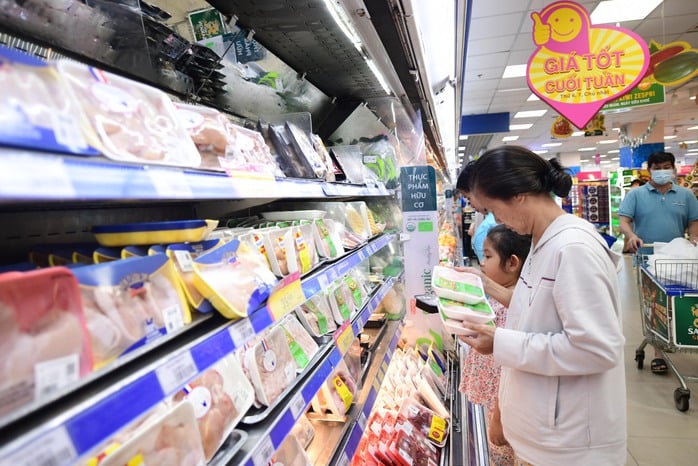
Stimulating consumption is one of the solutions being promoted by Ho Chi Minh City to achieve its annual growth target. Photo: HOANG TRIEU
From the business perspective, the Ho Chi Minh City Business Association (HUBA) said that through synthesizing opinions from the business community in the third quarter of 2025, the association found that the group of recommendations related to investment and consumption stimulus policies accounted for 63%, higher than the group of transport infrastructure (41%) and the group of capital and credit support (33%).
Enterprises in the food processing industry reflect that domestic raw material prices are currently significantly higher than imported goods. For example, domestic pork prices are dozens of percent more expensive than imported goods due to increased feed costs, small-scale production, and outdated technology. Many enterprises in the industry also said that raw material sources are unstable, most of which still have to be purchased through traders instead of directly linking with raw material areas, causing costs to increase and making quality control difficult.
Some other businesses said they are having difficulty accessing preferential capital packages to invest in green production, while the shortage of high-quality human resources in processing and supply chain management is hindering the process of technological transformation. There is also concern about exchange rate fluctuations, as the USD increased from 25,000 to 26,500 VND in just one year, causing import costs to increase by about 6%, increasing the burden of debt and production costs.
Big plans
Speaking to a reporter from the Lao Dong Newspaper, a representative of the Ho Chi Minh City Department of Industry and Trade said that to achieve the double-digit growth target in 2025, from now until the end of the year, the city will continue to implement many large-scale stimulus programs, notably a concentrated promotion program with the participation of more than 6,000 traders.
At the end of this year, the Ho Chi Minh City Department of Industry and Trade plans to organize a Supply-Demand Connection Week from December 19 to 21 in the Vung Tau area and a Bird's Nest Festival from December 12 to 14 on Nguyen Hue walking street to attract tourists and promote typical products.
Meanwhile, a representative of Saigon Co.op said that from now until the end of the year, the unit will focus on preparing goods, selling, promoting and expanding the network to serve more customers. Accordingly, on October 30, Saigon Co.op expanded its network with the opening of the Thong Nhat Co.opmart store at Bcons City Mall (old Binh Duong area), a new generation Co.opmart version, integrating self-service and food areas, applying technology and optimizing operations to serve residents of modern urban complexes.
The opening of Thong Nhat Co.opmart not only expands coverage in the key economic area of the East of Ho Chi Minh City but also demonstrates the long-term development orientation of Saigon Co.op: expanding the system along with quality, maintaining the role of a pillar in stabilizing the market - leading Vietnamese retail to develop sustainably for the community.
In addition, the city's tourism industry leaders said they are focusing on surveying and evaluating resources to reposition products and build new development directions, with the expectation of making a breakthrough and strongly exploiting the peak festival season, New Year and Lunar New Year 2026.
In the immediate future, on October 29 and 30, a group of about 100 guests representing departments, sectors, and businesses in the fields of tourism, healthcare, and cuisine participated in a medical tourism survey program in Ho Chi Minh City to build new medical tourism products to meet the needs of welcoming guests. In particular, the city will introduce the "Culinary Passport" and republish the "Ho Chi Minh City Culinary Guide" and announce many specialized culinary tours.
From now until the end of the year, a series of festivals, cultural and sports events will take place not only to promote the image of Ho Chi Minh City but also to stimulate and attract domestic and international visitors, notably the Ho Chi Minh City River Festival; Ho Chi Minh City Tourism Week is expected to take place in the last two months of the year, with a series of stimulus activities by tourism and service businesses in the area.
In the recently announced culinary tourism program of Ho Chi Minh City, the Department of Tourism has introduced 20 unique culinary tourism products, built by large enterprises such as Saigontourist Travel, Vietravel, Vingroup, Chim Canh Penguin, Kiwi Travel, TSTtourist... In addition, tourists can participate in self-experience programs such as making handmade chocolate at Chocoland factory, discovering delicious dishes in Vung Tau, or learning about the sustainable culinary model at Hikari Tokyu Binh Duong.
Accelerate capital disbursement
According to Mr. Tran Van Bich, Ho Chi Minh City needs to speed up the disbursement of public investment capital, striving for a disbursement rate of 100% of the plan. In the last 3 months of the year, Ho Chi Minh City needs to disburse 51% of public investment capital according to the plan assigned by the Prime Minister, 61.8% of the capital plan the city has implemented. Focus all resources to speed up the progress of projects, especially 34 key projects with large capital plans.
(*) See Lao Dong Newspaper from the issue dated October 28
Source: https://nld.com.vn/tang-toc-de-tp-hcm-tang-truong-dot-pha-tu-kich-cau-tieu-dung-du-lich-196251029215911055.htm


![[Photo] Ho Chi Minh City Youth Take Action for a Cleaner Environment](https://vphoto.vietnam.vn/thumb/1200x675/vietnam/resource/IMAGE/2025/11/04/1762233574890_550816358-1108586934787014-6430522970717297480-n-1-jpg.webp)

![[Photo] Ca Mau "struggling" to cope with the highest tide of the year, forecast to exceed alert level 3](https://vphoto.vietnam.vn/thumb/1200x675/vietnam/resource/IMAGE/2025/11/04/1762235371445_ndo_br_trieu-cuong-2-6486-jpg.webp)
![[Photo] Panorama of the Patriotic Emulation Congress of Nhan Dan Newspaper for the period 2025-2030](https://vphoto.vietnam.vn/thumb/1200x675/vietnam/resource/IMAGE/2025/11/04/1762252775462_ndo_br_dhthiduayeuncbaond-6125-jpg.webp)

![[Photo] The road connecting Dong Nai with Ho Chi Minh City is still unfinished after 5 years of construction.](https://vphoto.vietnam.vn/thumb/1200x675/vietnam/resource/IMAGE/2025/11/04/1762241675985_ndo_br_dji-20251104104418-0635-d-resize-1295-jpg.webp)




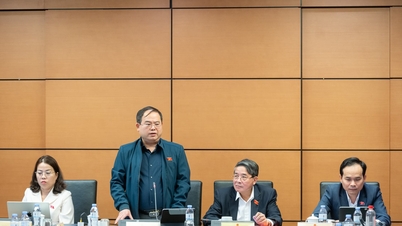



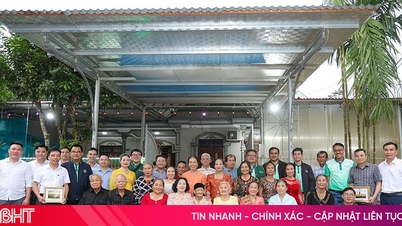

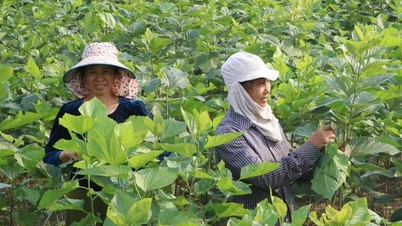


















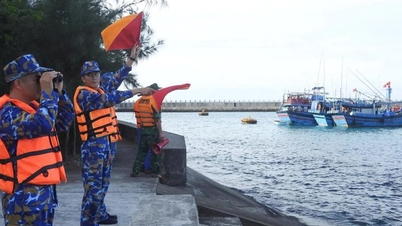






















































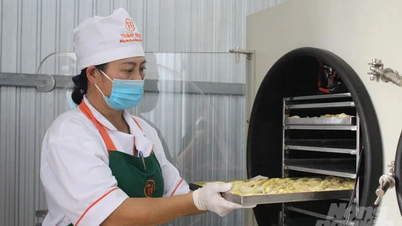
















Comment (0)